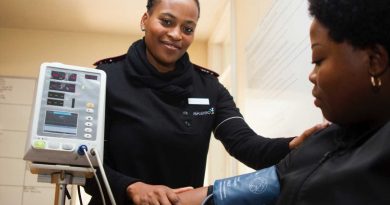Running vs Meds for Depression: Is There a Clear Winner?
Running therapy rivals antidepressant medication for the treatment of depression and anxiety, results of a new study show. However, running provides greater physical health benefits while adherence is greater with drug treatment.
“Both interventions helped with the depression to around the same extent,” study presenter Brenda W.J.H. Penninx, PhD, professor of psychiatric epidemiology at the VU University Medical Center in Amsterdam, the Netherlands, said in a release.
However, medication “generally had worse impact on body weight, heart rate variability, and blood pressure, whereas running therapy led to improved effect on general fitness and heart rate,” Penninx added.
The findings were presented here at the 36th European College of Neuropsychopharmacology (ECNP) Congress, and recently published in the Journal of Affective Disorders.
Research Gap
Previous research suggests exercise interventions can have a therapeutic effect equivalent to antidepressants, but their impact on physical health has been “poorly examined in a psychiatric population, the investigators note.
The authors note that depressive and anxiety disorders “cause immense suffering by compromising both mental and physical health,” and the need for effective treatments is “pressing.”
Although antidepressant medication is considered a “standard first-line treatment” alongside psychotherapy, the drugs are “not effective for all and [are] often associated with side effects.”
The Mood Treatment with Antidepressant or Running (MOTAR) study was a partially randomized pragmatic trial in adults with depression and/or anxiety disorder, as determined using the DSM-IV algorithms with the Composite International Diagnostic Interview (CIDI).
The 16-week intervention study included 141 patients with depression and/or anxiety. The mean age was 38.2 years and 58% were women. Participants were offered a choice of treatment: 16 weeks of treatment with the selective serotonin reuptake inhibitor (SSRI) escitalopram (Lexapro) or a 16-week group-based running therapy.
Patients without a strong preference for treatment allocation were randomly assigned to either antidepressant medication or running therapy, while those unwilling to be randomized were allocated to their preferred intervention.
A total of 22 patients were randomly assigned to receive antidepressant treatment and 13 to running therapy. A total of 36 participants chose antidepressant treatment, while 83 chose the running therapy.
Running therapy involved 16 weeks of supervised 45-minute outdoor running sessions to a target of two to three sessions per week, in line with US Centers for Disease Control/American College of Sports Medicine recommendations.
Physical Health Benefits
Treatment adherence in the antidepressant group, defined as still using treatment at the post-treatment assessment, was 82.2% vs 52.1% among running therapy participants, where adherence was specified as completing more than 22 sessions.
Remission was defined as no longer meeting the criteria of a current depressive or anxiety disorder via CIDI at week 16.
On intention-to-treat analysis, this requirement was met by 44.8% of patients taking antidepressants and 43.3% of those in the running therapy group (P = .88).
However, running therapy patients showed significant improvements in weight (P = .001), waist circumference (P = .011), systolic and diastolic blood pressure (P = .011 and P = .002, respectively), heart rate (P = .033), and heart rate variability (P = .006).
The investigators note the more favorable physical health changes in the running therapy group were due to “larger improvements in the running therapy group but also due to larger deterioration in the antidepressant group.”
Antidepressants are generally safe and effective and work for most people, said Penninx. She also noted that untreated depression leads to worse outcomes, so “antidepressants are generally a good choice.”
Nevertheless, she said, “we need to extend our treatment arsenal as not all patients respond to antidepressants or are willing to take them.”
The study’s results, she added, suggest that “implementing exercise therapy is something we should take much more seriously, as it could be a good, and maybe even better, choice for some of our patients.”
Francesca Cirulli, PhD, senior researcher and group leader at the National Institute of Health, Rome, Italy, told Medscape Medical News the study is notable because it is one of the first to prospectively measure the effects of antidepressants and running on physical health.
Cirulli suggested that running therapy could be tried ahead of treatment with antidepressants if patients prefer physical exercise and can adhere to it. However, she said, the findings also suggest that an increase in physical activity should accompany treatment with antidepressant medications.
Overall, Cirulli said “the message should not be that everyone can be helped by running and antidepressants are bad,” but rather “these are both helpful, but not excellent, interventions against depression.”
Important Limitations
Commenting on the research Eduard Vieta, MD, PhD, chair of the Department of Psychiatry and Psychology at the University of Barcelona Hospital Clinic, Barcelona, Spain, noted the study has “very important limitations.”
Among the limitations: the inclusion of nonrandomized patients who received the treatment of their choice, causing obvious bias and the “lack of binding and power issues” over the number of patients enrolled.
Vieta also told Medscape Medical News that the results “seem obvious, because it is known that exercise improves physical health.”
The trial therefore shows, “if you can find people who are able to do exercise while depressed and adhere to it, those would benefit from that practice,” he noted.
Also commenting on the research, Eric Ruhe, MD, PhD, Radboud University Medical Center, Nijmegen, the Netherlands, said the results are confirmatory and “again show physical health can influence mental health.”
However, Ruhe underlined, while it is “common practice” to allow patients to follow their treatment preference and is “understandable from a pragmatic point of view,” the group comparison may be “biased” compared to a “truly randomized study.”
“For example, patients in the antidepressant group were more depressed, which might be associated with less chance of persisting engagement in the exercises,” he said. “So, we have to be careful not to overinterpret the comparisons between groups, which the authors acknowledge properly.”
Turning to the difference in adherence between the two interventions, Ruhe said the results show adopting, and adhering to, a lifestyle habit is more difficult than taking a pill.
“This is not exclusively found in psychiatry, indicating that we also have to focus on how to improve compliance to healthy behavior. This could have tremendous impact on healthcare more generally, but also on psychiatric diseases,” Ruhe said.
The MOTAR study was funded by a NWO-VICI grant. Funding for the inflammatory markers was provided by ZonMw: The Netherlands Organization for Health Research and Development. The study authors and clinicians interviewed for this story declared no relevant financial relationships.
36th European College of Neuropsychopharmacology (ECNP) Congress: Abstract S01.03. Presented October 7, 2023.
J Affect Disord. Published online May 15, 2023. Full text
For more Medscape Psychiatry news, join us on Facebook and Twitter
Source: Read Full Article



